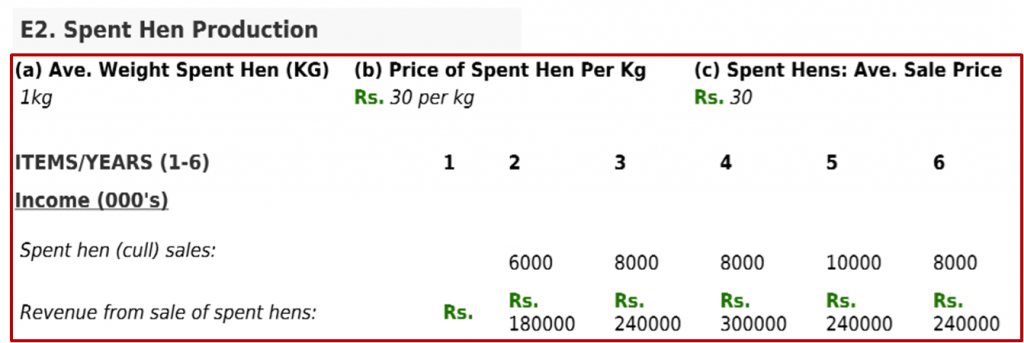Spent Hen Production
This is an example poultry farming project report ‘spent hen production’ summary…

What happens to layer hens when they get to the end of their commercial viability & profitability?
I.e. What is a hen worth when the value of the eggs it lays is less than the costs to keep the hen?
You simply sell the unprofitable hen at the market, as discounted chicken meat.
Layers aged 72 weeks are typically sold in this fashion, as ‘spent hens‘.
Whilst they don’t carry the same mass and quality of meat as an official broiler bird – they are still worth something at market.
Their meat is often made available as alternative cheap meat for those who need, or they are further processed to make a variety of derived food products, like stock flavourings etc.
Let's see what we can learn from our example...
If it takes 72 weeks for a laying hen to reach the end of it's commercial laying lifecycle, then it is impossible to raise any birds bought at 1 day old to this end within a 12 months (52 week cycle).
How many times does 72 go into 52 = zero.
Enough said.
Year 2, the earliest bought batches from year one reach the end of the commercial life cycle (72 weeks), whilst other batches bought at 12 weeks intervals apart are still producing well enough to keep.
Hence the figure of 6,000 spent hens for sale in year 2 (i.e. 3x batches of 2,000 hens)
Subsequent years of production yield with 4 or 5 batches of spent hens which are available to sell - as the waterfall pattern of 'sequential flock rearing' flows in that customary staggered fashion...producing more or less from year to year thereafter.
Further reading: